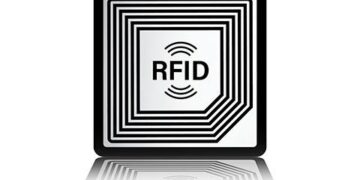For more than fifty years, economist John Hicks has been a towering figure in economic thought, yet his theories have increasingly come under scrutiny. The Courier & Press examines how Hicks’s influential ideas, long considered foundational, may have led the discipline astray. This article delves into the controversies surrounding his legacy, exploring why some experts now argue that his economic models have constrained understanding and policy for decades.
Hicks Economic Theories Challenged by Modern Data and Trends
Despite the once-groundbreaking status of Hicks’ theories, recent empirical evidence and economic shifts have exposed significant shortcomings. Notably, his assumptions about equilibrium and market efficiency no longer hold water in an era marked by rapid technological change and global interconnectedness. Modern data has revealed that key indicators, such as consumer behavior and investment patterns, frequently diverge from Hicks’ equilibrium models. Behavioral anomalies, market bubbles, and persistent unemployment challenge the predictive power of his frameworks, urging economists to reconsider the rigidity and universality of his principles.
- Dynamic economies: Empirical studies show fluctuations that are far from the “steady states” envisioned by Hicks.
- Role of innovation: Economic growth driven by tech disruptions is poorly explained by traditional Hicksian models.
- Financial instabilities: Modern crises contradict the presumed stability and self-correcting tendencies in Hicks’ theories.
| Theory Aspect | Hicks’ Projection | Modern Evidence |
|---|---|---|
| Market Equilibrium | Stable and attainable | Often volatile and elusive |
| Consumer Rationality | Consistent and optimal | Subject to biases and irrationality |
| Investment Response | Predictable to interest rate changes | Influenced by sentiment and innovation cycles |
Consequences of Prolonged Reliance on Outdated Economic Models
Persisting with outdated economic frameworks has led to a cascade of unintended consequences that continue to hamper policy innovation and economic resilience. These models, often rooted in mid-20th century assumptions, fail to account for the complexities of modern global markets, digital economies, and environmental constraints. As a result, governments and institutions relying on these archaic paradigms are ill-equipped to address pressing challenges such as income inequality, financial crises, and technological disruption. This stagnation not only skews policymaking but also undermines public trust in economic stewardship, as real-world outcomes diverge increasingly from theoretical predictions.
Key repercussions include:
- Overemphasis on equilibrium, ignoring market volatility and systemic shocks
- Neglect of ecological sustainability within growth models
- Inadequate consideration of behavioral economics and irrational market behaviors
- Rigid policy prescriptions that stifle adaptive responses
| Impact Area | Outdated Model Effect | Modern Reality |
|---|---|---|
| Financial Stability | Assumed constant rationality | Frequent sudden crashes |
| Policy Flexibility | One-size-fits-all solutions | Custom-tailored, dynamic approaches needed |
| Environmental Concerns | Growth prioritized over resources | Resource limits critical |
Experts Propose Revisiting Policy Frameworks to Foster Sustainable Growth
Leading economists emphasize the urgent need to overhaul outdated policy frameworks that have dominated economic thinking for decades. They argue that rigid adherence to traditional models has hindered innovation and exacerbated inequality, calling for a more adaptive and inclusive approach to economic governance. Central to this proposed shift is the integration of environmental sustainability and social equity as core objectives, rather than afterthoughts in growth strategies. Experts stress that without recalibrating fiscal and monetary policies to reflect the realities of a rapidly changing global landscape, sustained progress remains elusive.
Key recommendations from recent policy reviews include:
- Embedding climate risk assessments into national economic planning
- Promoting investment in green technologies and infrastructure
- Enhancing social safety nets to ensure inclusive prosperity
- Reforming tax codes to incentivize sustainable business practices
| Policy Area | Traditional Approach | Proposed Reform |
|---|---|---|
| Fiscal Policy | Focus on GDP growth | Incorporate environmental and social metrics |
| Monetary Policy | Inflation targeting only | Include climate stability considerations |
| Taxation | Revenue generation | Encourage sustainable entrepreneurship |
To Conclude
In reflecting on half a century of influence, the legacy of John Hicks serves as a complex chapter in economic thought-one marked by both innovation and enduring debate. As the Courier & Press detailed, the persistence of certain flawed ideas underscores the importance of continual reassessment within the field. Moving forward, economists and policymakers alike must remain vigilant in challenging established frameworks to better address the evolving realities of global markets and societies.















![[News] China Makes Breakthrough in Chip Technology, Paving the Way for Lithography Advancements – TrendForce](https://earth-news.info/wp-content/uploads/2025/11/324664-news-china-makes-breakthrough-in-chip-technology-paving-the-way-for-lithography-advancements-trendforce-360x180.jpg)














